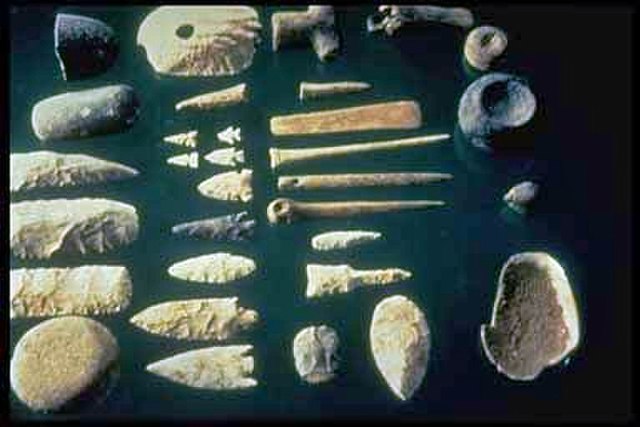The Langdale axe industry is the name given by archaeologists to a Neolithic centre of specialised stone tool production in the Great Langdale area of the English Lake District. The existence of the site, which dates from around 4,000–3,500 BC, was suggested by chance discoveries in the 1930s. More systematic investigations were undertaken by Clare Fell and others in the 1940s and 1950s, since when several field surveys of varying scope have been carried out.
Polished stone axe
Pike of Stickle on the left, from the summit cairn of Pike of Blisco. The central scree run has produced many rough-out axes.
Harrison Stickle, the highest of the Langdale Pikes, in the right centre of the group
Neolithic stone axe from Langdale with well preserved handle, found at Ehenside Tarn near the Cumbrian coast (now in the British Museum)
A stone tool is, in the most general sense, any tool made either partially or entirely out of stone. Although stone tool-dependent societies and cultures still exist today, most stone tools are associated with prehistoric cultures that have become extinct. Archaeologists often study such prehistoric societies, and refer to the study of stone tools as lithic analysis. Ethnoarchaeology has been a valuable research field in order to further the understanding and cultural implications of stone tool use and manufacture.
A selection of prehistoric stone tools
A biface (trihedral) from Amar Merdeg, Zagros foothills, Lower Paleolithic, National Museum of Iran
Clovis points from the Rummells-Maske Cache Site, Iowa
An array of Neolithic artifacts, including bracelets, axe heads, chisels, and polishing tools.








